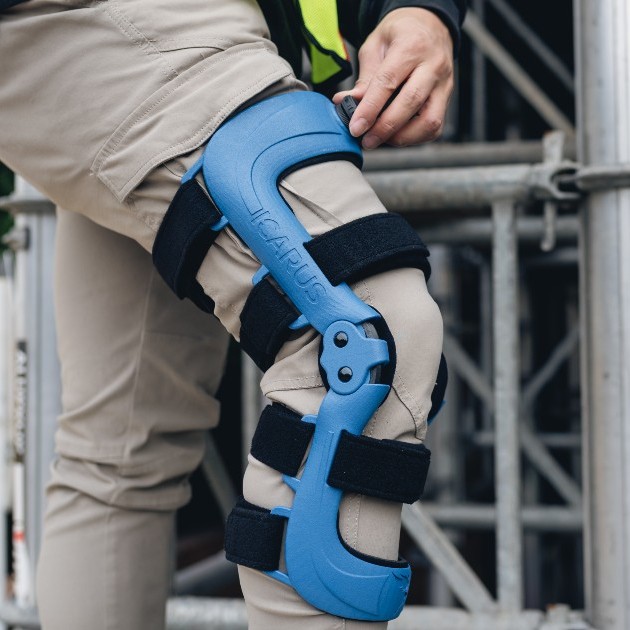Understanding knee pain and its causes is crucial. This blog explores the common causes of knee pain without a direct injury and offers insights into prevention and management strategies. Let’s delve into the anatomy of the knee joint and the various factors that can contribute to knee pain, from disease and infection to overuse.
Understanding the Knee
The knee is a complex joint that plays a vital role in supporting body weight and facilitating movement. Comprising bones, ligaments, tendons, and cartilage, the knee’s intricate structure allows for flexibility and stability, however, this also makes it susceptible to damage.
Non-Injury Related Causes of Knee Pain
While there are many potential causes for knee pain, here are the most common.
I. Arthritis
a. Osteoarthritis
Osteoarthritis, the most common form of arthritis, occurs when the protective cartilage at the ends of bones wears down over time. As the cartilage deteriorates, bones rub against each other, causing pain, stiffness, and swelling in the knee joint. Factors such as age, genetics, and previous joint injuries contribute to the development of osteoarthritis.
b. Rheumatoid arthritis
Rheumatoid arthritis is an autoimmune disorder where the immune system mistakenly attacks the synovium, the lining of the membranes that surround the joints. This leads to inflammation, pain, and potential damage to the cartilage and bone within the knee joint.
II. Overuse & Strain
These injuries are not so obvious and can be mistaken as soreness or regular wear and tear. However, if left untreated, they can develop into worse injuries.
a. Repetitive Stress Injuries
Repetitive stress injuries occur when repetitive movements or overuse of the knee lead to microtrauma in the tissues. This can happen in professions or activities that involve frequent kneeling, squatting, or lifting. Over time, these microtraumas contribute to knee pain and discomfort.
b. Tendonitis
Tendonitis involves inflammation of the tendons, which are the thick cords that attach muscles to bones. Overuse, sudden impact, or repetitive motions can cause irritation and inflammation, resulting in pain around the knee joint.
III. Obesity
Carrying excess body weight places additional stress on the knee joints. This increased load can accelerate the degeneration of cartilage and contribute to conditions like osteoarthritis. A healthy diet and regular exercise can help reduce BMI, therefore easing inflammation and knee pain.
The presence of excessive adipose tissue (body fat), is inflammatory, which can contribute to higher overall chronic inflammation in the body, including the knee joints. Weight management is crucial for preventing and alleviating knee pain associated with obesity.
Other Contributing Factors
Aside from the primary causes, there are several contributing factors to knee pain to be aware of.
I. Muscle Imbalances
Muscle imbalances around the knee joint, such as weak quadriceps or tight hamstrings, can affect the joint’s stability. Strengthening exercises and targeted stretching can help address these imbalances, promoting better knee function.
Imbalances in muscle strength can lead to poor knee alignment and stability, increasing the risk of injuries and contributing to chronic pain. Physical therapy and specific exercises can restore balance and enhance knee stability.
II. Incorrect Footwear
Wearing inappropriate footwear can impact the alignment and function of the knee joint. Shoes with inadequate support or improper arches may contribute to knee pain. Choosing footwear that provides proper support and aligns with the foot’s natural structure is essential for knee health.
Common mistakes include wearing shoes with worn-out soles, inadequate arch support, or insufficient cushioning. Ill-fitting shoes can alter walking mechanics and increase stress on the knees. Regularly assessing and updating footwear can mitigate these issues.
III. Infections
Infections in the knee joint can result from bacterial or viral sources. Timely diagnosis and appropriate treatment with antibiotics or antiviral medications are essential to prevent further damage and relieve knee pain.
Prevention and Management Strategies
In order to protect yourself from knee pain or future injuries, or manage existing knee pain, consider one or more of the following.
1. Knee Strengthening Exercises
Incorporating exercises that target the muscles around the knee, including the quadriceps and hamstrings, can enhance joint stability. Strength training helps support the knee’s structure and reduce the risk of injuries.
Regular stretching exercises promote flexibility in the muscles and tendons surrounding the knee. Improved flexibility reduces stiffness and enhances the joint’s range of motion, contributing to overall better knee health.
2. Weight Management
Maintaining a healthy weight is crucial for preventing and managing knee pain. Weight loss reduces the load on the knee joints, decreasing the risk of arthritis and other weight-related conditions.
Adopting a balanced diet and engaging in regular physical activity are key components of weight management. Consultation with a healthcare professional or nutritionist can provide personalized guidance for achieving and maintaining a healthy weight.
3. Using Proper Footwear
Selecting shoes with proper arch support, cushioning, and a good fit is essential for promoting healthy knee mechanics. Footwear that aligns with the foot’s natural structure helps distribute pressure evenly across the knee joint.
Additionally, orthotic inserts can provide additional support and alignment for the feet, reducing stress on the knees. Customized orthotics may be recommended by healthcare professionals to address specific biomechanical issues.
Mitigating the Risks of Experiencing Knee Pain
In conclusion, knee pain without involving an injury can arise from various factors, including arthritis, joint overuse, muscle imbalances, and other medical conditions. Understanding these causes allows individuals to adopt preventive measures and seek timely intervention when necessary. At Icarus Medical, we are dedicated to providing effective solutions to clients through our range of medical knee braces.
If you are interested in exploring a custom knee brace as a part of your prevention or treatment plan, don’t hesitate to contact our team. We can answer all questions that you may have and provide details on the process of acquiring your own knee brace.

